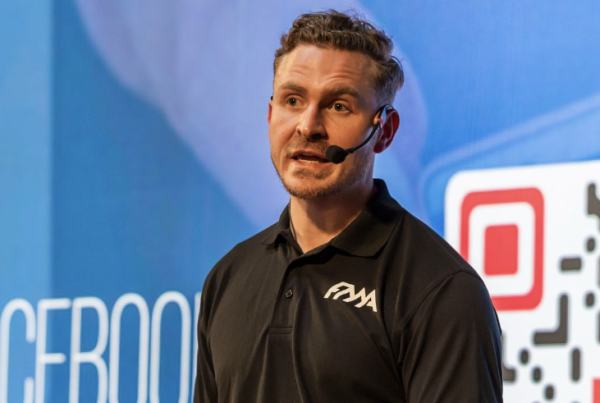As high-intensity training continues to dominate the fitness industry, Paul Edmondson delves into the potential negative effects of too much exposure to this one style, looking at stemming the flow of accelerated ageing, poor joint health and rapidly declining cellular health.
In recent years, high-intensity training has had a bright light shone upon it due to some of its awesome adaptations, such as increasing lean body mass (muscular aesthetics), decreasing body fat and increasing people’s metabolic engines.
As well as the obvious aesthetic benefits, there are cognitive benefits to be gained. When exercising with high-intensity protocols, you create and secrete an influx of endocannabinoids. Endocannabinoids mimic – exactly – the enzymes that live in marijuana. When you move with energy and purpose, endocannabinoids are shuttled from your muscles and flood into your bloodstream, giving you the ‘high’ that comes with feel-good intensity training.
These feel-good hormones also improve cognitive functions, including:
- increased growth of new neurons (additional cells created); when the hormone brain-derived neurotropic factor (BDNF) is secreted, it forms new brain cells
- increased growth of synapses (connections) between new neurons; the secretion of vascular epithelial growth factor (VEGF) stimulates the formation of new synapses (connections) between brain cells
- improved mental health and wellbeing
- improved concentration, capacity for learning and decision-making abilities, plus an improvement in many more cognitive functions.
With so many great reasons to choose high-intensity training, it is important to remember to augment it with some low-intensity and recovery strategies to offset its potential negative effects. Too little or too much of anything can create potential problems. And guess what? High-intensity exercise is no different. Too little or too much high-intensity exercise equals problems.
Some of the potential negatives of high-intensity training (if you do too much, or do not include low-intensity or self-care strategies) are listed below:
- High-intensity exercise is often repetitive in its action and is typically sagittal-plane dominant – this WILL lead to repetitive stress on joints and tissues, and the lack of omni-directional movement will lead to early-onset osteoarthritis (‘if you don’t use it, you lose it’).
- With its lack of aerobic input, mitochondrial density declines (both size and number in cells). Research shows that increased mitochondrial density equals a longer life span in cells, which improves longevity.
- When high-intensity exercise protocols are executed, a ‘faster, harder, stronger’ pathway is triggered, which equates to muscle growth, the burning of body fat and the amplification of speed/power. However, if this is allyou do, the lack of aerobic training inputs can/will decrease cellular longevity (lifespan decreases) as all cell function is predicated on the size/number of mitochondria it boasts; high-intensity exercise diminishes the requirement for mitochondria due to its oxygen-deficient stimulus. The net result is the cell life will diminish, thus YOU will shorten your lifespan (you are 37 trillion cells after all). Remember High intensity = FITNESS; low intensity = HEALTH! Why have one when you can have both?
So, the question becomes, “How do we maximise high-intensity training’s awesome potential, but defend against its negative connotations?”
Well, first and foremost, we can include high-intensity training two or three times a week – go for it, enjoy it and give it some beans, people!
Secondly, we can include the following seven hacks to give you a great start to improving your health. Remember that too much ‘fitness’ can detract from your health bucket – this article intends to refill your rapidly emptying bucket.
So, here are the tips:
Number 1 – Breathing strategies
Breathing strategies help replenish mitochondria in cells, reduce blood pressure, and allow muscles to downregulatestress and tension, as well as improving circulation via parasympathetic tone.
Breathe in through your nose for three seconds, pause for two seconds, then slowly breathe out for five to 10 seconds (nasal again). Accentuate the breath out, as this is the ‘switch’ to the nervous system. Begin with a simple two-minute cycle and increase as you feel comfortable. To start, I would suggest simply lying on your back until you master the technique.
Number 2 – Vibration techniques
Vibration products are utilised for circulation benefits, quick recovery between training sessions and to ‘calmly’ relax the mind and body through ‘touch-induced analgesia’. This relaxes the brain to combat stress, improve mood, and stimulate hormones like melatonin/serotonin to improve sleep and allow us to feel good.
Try this on tense areas – use a comfortable vibration speed, in a comfortable relaxed posture, for a minimum of two minutes (actively promote breathing as above).
Number 3 – Controlled articular rotations
Coined by Dr Andreo Spina, these are local joint movements that take each joint comfortably through its entire active ranges of motion to maintain and develop health and longevity of the body’s moving parts. This is also your best defence against osteoarthritis.
Try this with your shoulder for a minimum of three repetitions (forwards and backwards) every day.
Number 4 – Steady state CV training
This could mean walking, cycling, running or sitting on a stationary bike at well below threshold. This improves circulation, increases mitochondria, decreases blood pressure and increases the size/number of mitochondria in cells – which, as we learned above, increases your lifespan!
Begin with two or three times a week for 20mins per session at around six out of 10 (RPE scale).
Number 5 – Meditation
Relaxation, breathing and positive mindset all help to upregulate a parasympathetic tone within the brain’s chemistry – this means heart rate and blood pressure can downregulate, breathing rate can increase and circulation can travel. Muscle tensions can ‘calm down’ – all of which can facilitate health outcomes, improve sleep and improve mental health.
Begin with one 10-minute session per week.
Number 6 – Foam rolling/SMR
Most tissue tightness in the human body is down to dehydration, not ‘tightness’. This is why you need to add foam rolling. Foam rolling does NOT stretch tissue; it helps to bring ‘fluid’ (blood, water and lymph) back between the tissues, which enables the contractile abilities to move and thus brings about better movement ability and circulatory health.
Try this for a minimum of two minutes in your calves. This is a great place to start as the calves are often referred to as the ‘second heart’ (they have their own unique ‘pumping’ mechanism – non-return valves enable circulation to go back to the heart from the lower body).
Number 7 – Movement snacks
This hopefully needs little introduction. As we know, sitting is the new smoking. There is no such thing as the perfect posture – only a moving posture. Any form of stillness will cause circulatory, metabolic and musculoskeletal decline – the only perfect posture for the living human being is a moving posture. As often as possible, move!
I hope this helps to promote better recovery for you and your clients, helps to reacquire health and a better mindset, and augments training for the better.
To your health and fitness.
Want to learn more from Paul? Check out his blog on bulletproofing the body through squatting.
Author Bio:

Paul Edmondson is a dedicated leader within the fitness industry, having worked with, and for some of the leading pioneers and biggest brands in the world both nationally and globally. Paul has presented in 24 countries, over 5 continents on behalf of Gray Institute, ViPR, TRX, Anatomy Trains, Trigger Point, SKLZ, institute of Motion and at the IDEA World conference. His thought-provoking sessions are designed to bridge the gap between the traditional and new sciences to better equip trainers to serve their unique and individual clients. Paul takes pride in delivering complex content in a simplified and application specific manner that is perfect for trainers wanting to learn more, and is determined to drive forward those he works with to help them become “better versions of themselves”
REFERENCES
- Dr Duncan French (Endocrinologist) – Control yourself podcast
- Gray Institute – Tweakology (video digest series)
- Florida State university study mitochondrial density and link between health and longevity
- Brad Schoenfeld – Science and development of muscle hypertrophy
- Michol Dalcourt – institute of motion Level 1 mentorship
- Hyperice recovery course UK
- Dr Andreo Spina FRC certification
- Robert Schleip – Fascia tensional network of human body
- Seven movements – John Sinclair







